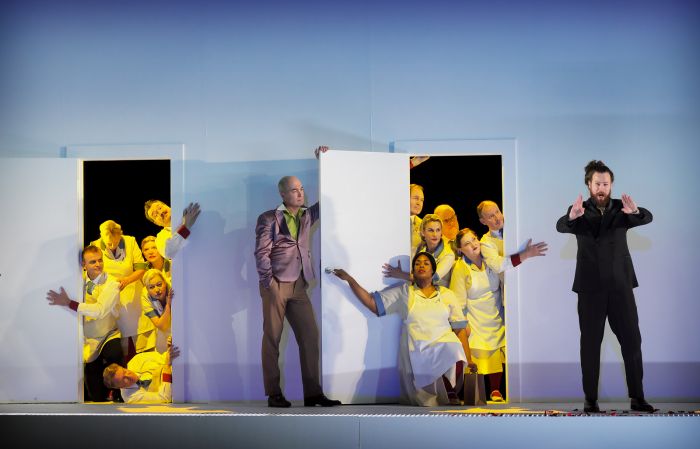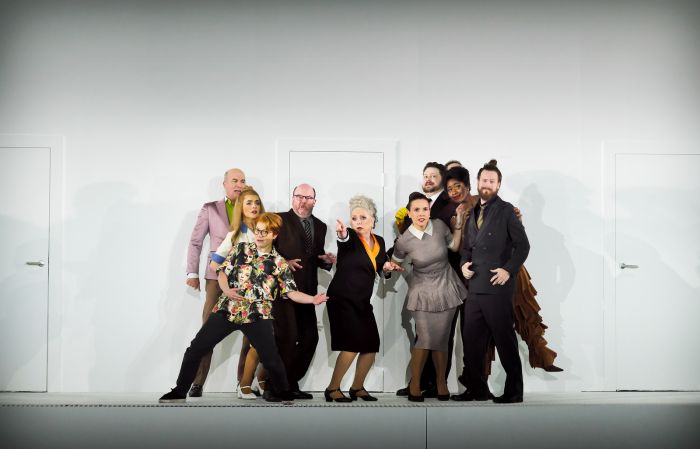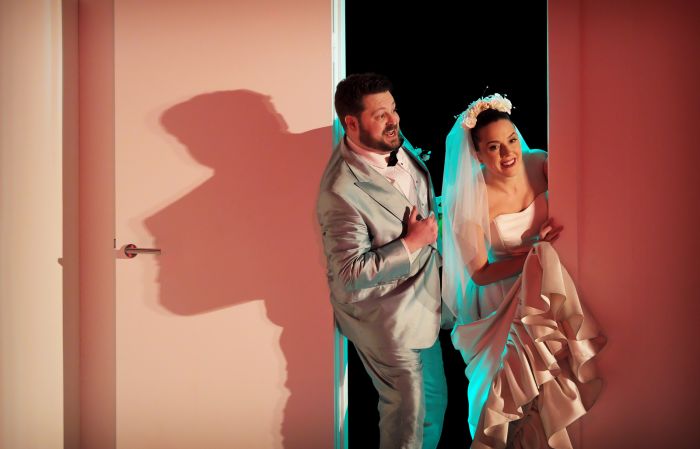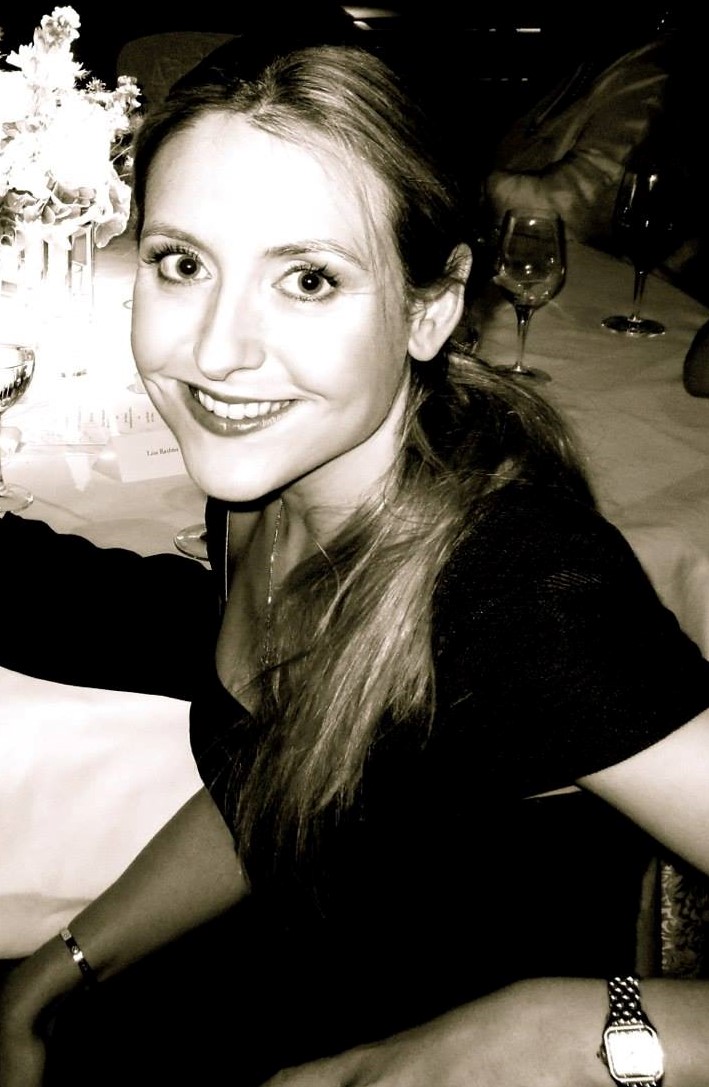
Joe Hill-Gibbins' staging of The Marriage of Figaro for English National Opera ditches the 18th century entirely. Frocks, furuniture, wigs, stately home, and pretty much the entire upstairs-downstairs aristocracy and servant duality are stripped away. Indeed, unless you are familiar with the story, you might wonder why characters in modern dress are fretting about “feudal rights”. The axis of Hill-Gibbins' gloriously simple and pared back production is the question of who’s in – on the secret, the joke, the family – and who’s not, rather than the simmering tensions between the classes. The only set to speak of is a plain white box (that rises, falls, and recedes), and the only features are four doors — but boy, do those doors see some action. They must be opened and closed 100 times even before the end of the overture as the cast pull them open, pose as if for selfies, and then disappear.
Premiered in March 2020, Hill-Gibbins’ critically acclaimed production makes a welcome return to the London Coliseum after having opened for one performance in March 2020 before the pandemic shut all theatres and forced us all to remain in our own domestic boxes. The neoteric nature of that experience augments the allure of this singular staging’s frenzied fervor.
The shifting alliances and fragile coalitions of a household in flux is the pretext, with gender, money and status alternately taking their turn as the fulcrum amidst a more than usually eclectic cast of characters in a modern staging whose focus is all in the coaction. Within these confines, however, Hill-Gibbins devises a vivacious farce, full to the brim with soft-shoe shuffles, double-takes, slapstick gags, freeze-frames and some quite shameless mugging. There’s never a dull moment, and when the cast is motionless the set itself starts moving.
To his credit, though, Hill-Gibbins respects the opera’s sincere emotional undertow. The chief beneficiary of that is Nardus Williams, whose Countess Almaviva is a palpably broken woman who delivers her arias with suppleness and affecting poignancy. There’s delectable singing too, from Mary Bevan, whose impeccable diction and supreme charisma elevates Susanna to the epitome of a modern opera heroine.
Hanna Hipp, reprising the role of Cherubino from 2020 makes a convincingly lustful teenager, sings a sublime “Voi che sapete”, and does a heroic leap from the window onto a waiting mattress to rapturous applause.
David Ireland impresses as a blustery Figaro, Cody Quattlebaum makes a notable debut as a lithe, crisp Count, and there are spirited contributions from Trevor Eliot Bowes as the gardener Antonio and the pulchritudinous Ava Dodd (ENO’s current Harewood Artist), who sings Barbarina’s sad, ambiguous aria beautifully.
The spartan nature of the set is more than compensated for by the characters, who in the absence of any props, chairs, or other supports, reveal themselves to be masterful dramatists. Behind every door, there is a story. Susanna and the Countess don’t have a table on which to write a letter to the Count, so instead he appears between them, and Cherubino is hidden behind an open door rather than under a sheet. Much credit should go to Jenny Ogilvie, whose movement direction creates a constant stream of striking stage pictures. It enables telling relationships, often clustering the characters together as in the hilarious sextet in which Figaro’s would-be bride Marcellina is revealed as his mother.
Jeremy Sams’s ingenious text is arguably more a new libretto than a translation, but it is properly, blissfully witty, and manages to make one of opera’s most intractable plots not only lucid but idiomatic.
Under the baton of Ainãrs Rubikis, making his ENO debut, the music is propelled along with effervescence, with flair especially being drawn from the strings and woodwind. The ENO Chorus is on fine fettle; and at a time of funding cuts, it is worth noting what a precious asset it is: several of its members, including Gloria Crane, David Campbell and David Porter-Thomas have performed superbly for many decades.
Hill-Gibbins’s sparky production brings Mozart’s wit and comedic characters to life, and the contemporary staging brings a freshness to the sempiternal themes at play. It is easy to see why Figaro remains enduringly popular in operatic repertoire after more than 200 years.
The Marriage of Figaro *****
English National Opera, London Coliseum, St Martin's Lane, London WC2N 4ES



Elisabeth Rushton
Elisabeth has over 15 years of experience as a luxury lifestyle and travel writer, and has visited over 70 countries. She has a particular interest in Japan and the Middle East, having travelled extensively around Saudi Arabia, Oman, Jordan, and the UAE. A keen skier, she has visited over fifty ski resorts around the world, from La Grave to Niseko. She writes about a broad spectrum of subjects...(Read More)










